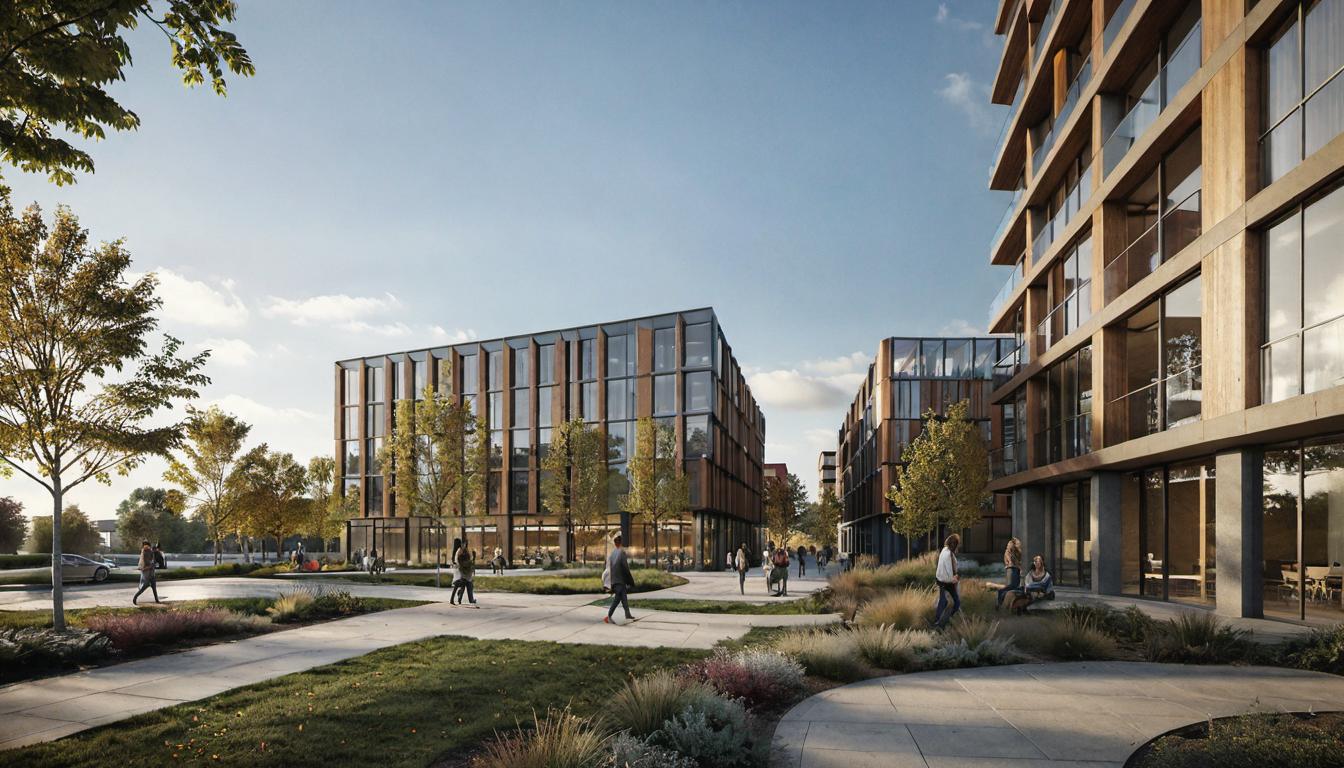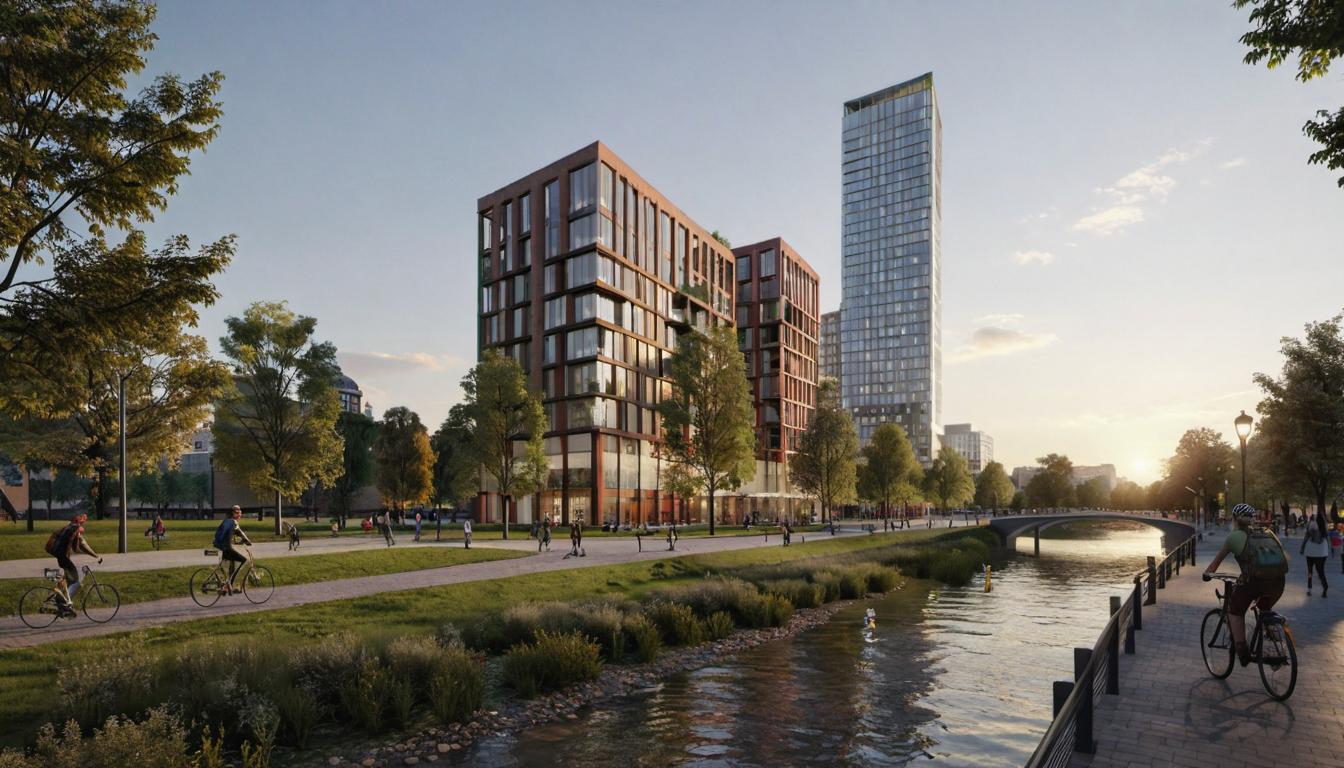1. Escalating Design Iterations with AI
The impact of artificial intelligence on architectural renderings is substantial. Among many other benefits, AI technology accelerates the design iteration process by providing quick suggestions, eliminating time-consuming tasks and making the overall work highly efficient.
1.1. AI’s Role in Automating Recurring Duties
- Architects often spend a significant amount of time on repeated tasks. With AI introduction, these tasks can be automated hence saving both time and effort of architects.
- By simplifying the tasks of drawing and updating repetitive building components, artificial intelligence enhances productivity and promotes focus on critical design aspects.
2. AI’s Assistance in Automating Complex Rendering Techniques
AI technology, especially in architectural renderings, has resulted in automation of complex rendering techniques and lighting conditions. Intelligent AI engines interpret the scenes, tweak parameters, and offer optimal lighting conditions apart from ensuring consistent high-quality visuals.
2.1. Leveraging AI-Powered Rendering Engines for Lighting Adjustment
- AI-powered rendering engines offer architects the ability to intelligently adjust lighting, helping to create more realistic visual effects and save time.
- AI rendering engines use machine learning algorithms to calculate light interactions and reflections, making photorealistic renders achievable in less time.
3. AI’s Part in Developing Real-Time Interactive Experiences
AI technology significantly contributes to the creation of real-time interactive experiences in architectural visualization. Apart from fostering effective communication, these AI-driven tools adapt to interactions and inputs, further aiding decision-making processes.
3.1. Evaluating AI-Driven Architectural Instruments
- In architectural design and rendering, AI tools have evolved and provide dynamic tools that let architects play around with different designs and structures in real-time.
- These tools allow for immediate feedback and easy exploration of design variations, promoting effective collaboration between architects and clients.
4. AI’s Data Processing Skills in Decision Making for Architecture
AI impacts architectural visualization by enabling data-driven decision making. It expertly processes and extracts valuable referrals from a substantial amount of data, enabling architects to optimize designs based on crucial factors such as energy efficiency, comfort, and sustainability.
4.1. Useful AI Patterns in Architectural Rendering and Design
- AI algorithms generate numerous design iterations based on pre-set parameters, facilitating effective design exploration.
- AI’s capabilities of studying site conditions, climate data, and user preferences assist it in suggesting optimal design solutions that coincide with practical considerations and user needs.
5. AI and AR’s Influence in Bringing Physical and Virtual Worlds Closer
AI and AR together have successfully bridged the gap between physical and virtual worlds, enhancing the experience of architectural visualization. By implementing accurate object recognition, real-time tracking, and spatial mapping, these technologies have improved communication and facilitated effective decision making.
5.1. AI’s Position in Spatial Mapping and Item Recognition
- The integration of AI with AR technologies has redefined how architects perceive their renderings by constantly adapting and optimizing visual elements based on user interactions.
- AI’s role in analyzing user behavior and feedback and tailoring architectural visualizations to meet the unique needs of different stakeholders has been significant in improving architectural visualization experience.
6. Fostering Reality in Architectural Rendering with the Use of AI
AI introduction has redefined the architectural visualization process by enhancing the creation of realistic textures and materials. Through doing so, it saves time and enhances the visual quality of architectural visualizations.
6.1. AI’s Influence on Material and Texture Formation
- Artificial Intelligence plays a critical role in automatic texture and material formation in architectural visualization, substantially reducing time and effort required.
- As part of AI’s impact on architectural visualization, generating realistic and detailed textures enhances the final visual output and makes the designs more appealing.
7. AI’s Involvement in Effective Space Utilization and Building Performance Enhancement
AI technology aids architects in the optimization of building layouts, organization, and functionality, along with evaluation of building performance metrics. It also enables simulation of scenarios to assess the effects of design changes on building performance even before the actual construction takes place.
7.1. Simulating Scenarios with AI for Design Amendments Pre-construction
- AI aids architects in visualization of potential changes and future developments, thus optimizing designs from the get-go.
- Architects can also use AI in the restoration and preservation of architectural heritage sites, allowing for creation of accurate, high-resolution renders from photos.
FAQs on AI and Architectural Renderings
- How does AI enhance architectural rendering and design iteration process? AI streamlines the design iteration process by providing quick suggestions and automating repetitive tasks, hence enhancing the overall productivity and efficiency. It also allows architects to focus more on critical design aspects.
- What impact does AI have on the automation of rendering and lighting techniques in architecture? With AI-powered rendering engines, architects can achieve optimal lighting and realistic visual outcomes without much effort. These engines intelligently adjust parameters based on the scene, saving substantial time and ensuring high-quality visual outputs.
- How does AI facilitate the creation of immersive and interactive environments in architectural visualization? AI’s contribution to the creation of dynamic interactive experiences fosters better communication and decision-making. AI-driven tools adapt to user interactions and inputs, which results in a more informed, interactive design exploration process.
- In what ways has AI improved the process of texture generation in architectural renderings? In architectural visualization, AI simplifies the process of creating realistic and detailed textures. Consequently, AI doesn’t just save time but also enhances the visual quality of architectural renderings.
- What role does AI play in optimizing space utilization and improving building performance in architectural visualization? AI aids architects in tailoring layouts, organization, and functionality to optimize space. It further helps in evaluating vital performance metrics like energy consumption and comfort. AI can simulate scenarios to assess the effects of design changes on building performance pre-construction.






